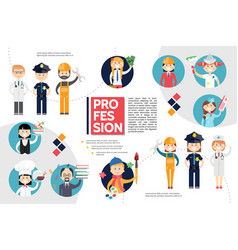Discover How Seasonal Impacts Can Impact The Performance Of Industrial External Painting And Find Out The Most Desirable Times To Guarantee Long Lasting Outcomes For Your Job
Discover How Seasonal Impacts Can Impact The Performance Of Industrial External Painting And Find Out The Most Desirable Times To Guarantee Long Lasting Outcomes For Your Job
Blog Article
Personnel Author-Carlson Whalen
When you're planning an industrial exterior painting project, seasonal aspects can make or break your outcomes. You'll want to think about just how temperature level and humidity effect paint application and drying out times. Choosing https://edwinrxflq.bloggactif.com/36913709/gain-essential-pointers-from-property-owners-for-a-fruitful-collaboration-with-paint-service-providers can ensure your paint adheres appropriately and lasts longer. However which seasons are absolutely the best for this sort of job? Allow's explore the key elements that can impact your project's success.
The Impact of Temperature on Paint Application
When you're intending a commercial outside painting project, the temperature level can considerably affect exactly how well the paint sticks and dries out.
Ideally, you intend to repaint when temperatures range between 50 ° F and 85 ° F. If it's as well chilly, the paint might not cure properly, causing problems like peeling or fracturing.
On the flip side, if it's also hot, the paint can dry too promptly, avoiding correct bond and resulting in an irregular surface.
You need to also take into consideration the time of day; morning or late afternoon uses cooler temperature levels, which can be a lot more positive.
Constantly check the supplier's recommendations for the details paint you're using, as they frequently offer assistance on the perfect temperature level range for optimal results.
Moisture and Its Impact on Drying Times
Temperature isn't the only ecological element that influences your industrial exterior painting task; moisture plays a considerable duty as well. High humidity degrees can slow down drying times dramatically, affecting the total quality of your paint work.
When the air is filled with wetness, the paint takes longer to treat, which can cause issues like bad bond and a higher danger of mildew development. If you're repainting on a specifically moist day, be prepared for extensive wait times between layers.
It's critical to check regional climate condition and plan appropriately. Preferably, go for moisture levels between 40% and 70% for optimal drying.
Maintaining strate line in mind ensures your task stays on track and supplies a long-term surface.
Best Seasons for Commercial Outside Paint Projects
What's the very best time of year for your business exterior paint tasks?
Springtime and very early loss are commonly your best bets. Throughout these seasons, temperature levels are light, and moisture degrees are typically lower, developing ideal problems for paint application and drying.
Stay clear of summer's intense heat, which can trigger paint to completely dry too quickly, leading to bad attachment and finish. Likewise, winter months's chilly temperatures can impede proper drying and curing, taking the chance of the long life of your paint job.
Aim for days with temperatures in between 50 ° F and 85 ° F for optimal outcomes. Keep in mind to inspect the regional weather prediction for rainfall, as wet conditions can wreck your job.
Preparation around these factors guarantees your painting job runs smoothly and lasts much longer.
Conclusion
To conclude, planning your business outside painting jobs around seasonal considerations can make a substantial difference in the outcome. By organizing job during the suitable temperatures and humidity degrees, you'll make sure better bond and drying times. Remember to watch on local weather forecasts and pick the correct time of year-- spring and early fall are your best options. Taking these steps will aid you accomplish a resilient and specialist surface that lasts.
